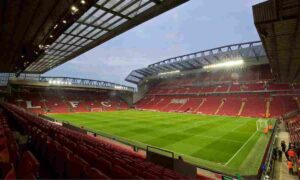East Bengal is a multi-sport professional Indian club in Kolkata, West Bengal. East Bengal Club, founded on August 1, 1920, has a long and illustrious history in Indian football. The Club nicknamed the Red & Gold Brigade, has millions of supporters all across the world who exemplify its never-say-die spirit.
Emami Group, a Kolkata-based multinational business conglomerate, became the club’s investor in 2022. They had the objective of assisting the club in regaining its glory days.
East Bengal’s new ‘Reset’ initiative began with new management. We all have been talking about the latest signings they making, but we know very little about them. Let’s have a look at the 5 facts about East Bengal. If you are a real supporter of them, you should know all these facts!
1. The origin of East Bengal
There was a small club where the refugees used to come to play Cards and Chess and they used to call it “East Bengal Club”. the club was then formed by Deshbondhu Chittaranjan Das, the famous freedom fighter and leader. It was situated in his house(now Chittaranjan Hospital) in Calcutta and this happened in 1905 when Bengal was partitioned. It was closed later due to freedom movements. On the day, 1st August 1920, when Suresh Chandra Chaudhury called Sailesh Bose and Nosa Sen into his office. His office was in that place where you will find the Peerless building today. Then Chaudhury asked for name suggestions. At that moment Sailesh Bose remembered this “East Bengal” name and requested this name. At first, Chaudhury was not sure of this name as he thought that would create another provincialism but later agreed to go with this name.
[Source: Indian Football Protagonists]
2. Representation of immigrants
East Bengal is a club that mostly represents Kolkata’s immigrant community. Mohan Bagan, on the other hand, symbolizes the region’s native inhabitants. Thus, the Club is primarily supported by the Bangals, or the immigrant population from Bengal’s eastern region. They were forced to flee their homes (modern-day Bangladesh) during the 1947 partition. East Bengal Club became a source of identification and hope for those individuals.
East Bengal was dubbed the “inferior club” by Mohan Bagan’s followers. However, you should be aware that torch-bearers have represented India the most times in international competitions.
Read More– Weekly Transfer Roundup: East Bengal
3. The Inspiration for the Crest
In 1930, Mahatma Gandhi’s Satyagraha swept over India, influencing football. Midway through the season, many Indian clubs boycotted the then-ongoing Calcutta Football League. East Bengal, on the other hand, was denied promotion to the First Division. Thousands of East Bengal supporters and authorities decided to march in protest at the East Bengal Ground. Protesters brought burning torches along with them on this march. And the ‘hand holding a flaming torch’ (called in Bangla as ‘Mawshal’) became the club’s insignia. Which has survived to this day. That is where the club logo comes in.
4. Jersey color
The club’s founders were inspired by a red and gold T-shirt they spotted hanging in the Whiteaway, Laidlaw & Co. department store in Chowringhee, Kolkata. It piqued their interest, and they decided on that color and jersey. It cost $80 in 1920, which was four times the national average. The East Bengal team adores the jersey and will continue to do so indefinitely.
5. The only Indian team who won quintuple thrice
East Bengal is the only Indian team who have won five trophies in a season. They have not done it once but they have done it thrice. During the 1972-73 season under coach P.K. Banerjee, they won Calcutta Football League, Rovers Cup, Durand Cup, IFA Shield, and Bordloi Trophy. Even in the next season, they have won five trophies. After a long pause for 30 years, again in 2002-3 season, they won the quintuple again. Making them the only Indian team to win quintuple thrice.
Follow our Twitter Handle for more updates.
For more football updates, make sure to follow us on:
























